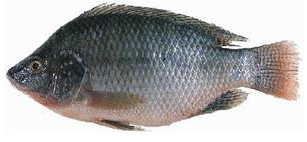5.3 Pressurized areas
If we imagine cylindrical modular modules, 5 m in diameter and 20 m long, the total required area of 10 hectares would imply a total of 1,000 modules, leading to a construction time of 20 years, assuming a production rate of one new module (fully equipped!) per week. A true industrial pace, but that does not seem extravagant compared to the whole project data. Note that in case of cylindrical modules, the corresponding volume would be of the order of 300,000 m3, representing, under a 340 hPa pressure, an air mass easily producible over 20 years (about 100 mT) and maintainable even with a significant rate of loss (5% per year).
18 Next century, Mankind could master fusion. But, setting aside some revolutionary discovery, which some people nevertheless hope for (cold fusion, inertial electrostatic fusion…), fusion power stations will remain monsters impossible to shrink down to a size which could be sent from Earth to Mars!
These modules will be covered with regolith. But for some of them at least, an indirect lighting device (skylight with mirror) should provide an opening toward the outside, beneficial to the psychological wellbeing of the inhabitants.
Despite the difficulties presented by the construction of pressurized areas significantly larger than the standard cylindrical modules considered, it is difficult to imagine a colony consisting only of such areas; efforts will be made to develop a limited number of public areas consisting either of transparent domes, or of vaulted galleries made either with brick or with cement (as in the March Homestead Project). Spherical or lenticular plastic domes, inflatable and thirty meters in diameter, are conceivable; they would allow arranging a variety of friendly social areas, certainly less protected from radiations but where people would stay only occasionally anyway. The brick arches pose serious problems of building in the open air and of labor cost, but the result is appealing.
In the end, we propose to retain the following mix as a hypothesis:
- 700 cylindrical modules, 100 m² each;
- 30 common areas (domes, vaulted galleries), 1,000 m² each.
The workshops will be distributed, according to the volume impact of their means, between these two types of areas.
5.4 Food Production
Food production of 0.7 kg / day (anhydrous equivalent) would require 60 m² of greenhouses, in conditions of natural light, i.e. 12 hectares of greenhouses for the whole colony. The use of artificial lighting and hydroponics could significantly reduce the growing area and the total surface area, but at the expense of a high energy consumption. C. Rahaim (STAIF 2008) gives, for a nutritional greenhouse project sized for a crew of 6 astronauts with artificial lighting, the following values (per person): cultivated area: 32 m² (packed on 25 m² only, taking into account crops surface organization); electric power close to 50 kWe. For 2,000 residents, we would thus get a cultivated area of 6 hectares, which could, given a proper shelves laying out, match a pressurized greenhouse floor area of approximately 4 hectares, but at the cost of a lighting power of 100 MWe.
This gets to almost triple the consumption of the colony, unless we assume that we would feed alternately, during a same day, the greenhouse lighting and the materials / fluids production units (but we must then double the acreage under cultivation). We also have to figure out the infrastructure that these areas represent in terms of equipment as diverse as water systems, electricity wiring, lighting (thousands of lamps), etc. It would be appropriate to make a detailed assessment of the total mass to be imported from Earth for each one of these two solutions.
It is possible to drastically reduce the atmospheric pressure in greenhouses as plants can thrive with 50 to 90 hPa, including 20 to 60 N2, 20 O2, 6 water vapor, less than 1 CO2; but it is preferable to enrich the atmosphere with CO2 (up to nearly 100% compared to Earth) to increase yields (with just enough O2). Of course, this low pressure would require wearing a spacesuit to work in greenhouses. Despite a larger amount of atmospheric gases to provide, an even pressure with the inhabited modules (i.e. 340 hPa) may be preferred; this choice would allow entering greenhouses without spacesuits, a breathing apparatus remaining nevertheless required since the atmospheric composition would be different. In any case, tending crops will require a high degree of automation because of the large areas involved and the interest to free human beings of labor intensive tasks likely to be automated. For terrestrial greenhouses, the need is one person for 40 m²; the 60,000 m² acreage considered here would therefore demand a workforce of 1,500 settlers, if we keep the same ratio…
The need for irrigation water is discussed here below (cf. §5.5.1); It naturally depends on the chosen method of cultivation (using soil or hydroponics), but also on the choice of cultivated species and climate conditions maintained in the greenhouse (particularly moisture content).
As shown by the detailed analyzes of the Phoenix probe, the Martian soil seems to hold most of the necessary nutrients except organic matters. These will be provided mainly by recycling the organic waste of the community (human and possibly animal). Settlers will probably wish to amend the soil with nitrogen fertilizers. These can be produced synthetically from the nitrogen extracted from the atmosphere.
If the soil is cultivated, it must first be « washed » to rid it of its salts (abundant on Mars) and the peroxides that it contains.
Yoshi Ishikawa et al. (AAS 90-251) give an example of crops surfaces distribution:
| Wheat | 40% |
| Rice | 26% |
| Potatoes | 16% |
| Strawberries | 6% |
| Lettuce, tomatoes, beans, onions | 3% each |
(Note, however, that the performance of rice in terms of irrigation need is poor).
As a complement to this production of plants, it would be interesting to have access to some animal protein sources, although the energy efficiency for the production of this food is very poor compared to that of plants. The presence of animals would also add some value to the by-products of plants production (waste).
Fish farming seems the easiest solution to master, as much from containment as from waste management point of view. The tilapia species, which comes second after carp as object of aquaculture, is interesting for its growth rate, its robustness and its diet based on vegetable proteins. Its breeding is highly developed in Canada, within a closed loop in heated fresh water (between 22 and 31°C). But raising goats (for milk) and chickens is also conceivable. In order to produce 100 g/person/day of animal proteins, it has been estimated (Yoshi Ishikawa, AAS 90-251) that we would need the following populations:
- 50,000 fish
- 700 goats
- 2700 hens
The ecological management of such populations in a closed system presents many unknowns: how to recycle waste, by-products? How to control sanitary aspects?




excusez moi mais que signifie mT/sol
mT/sol : Tonne du système métrique (les Américains ont une Tonne un peu différente !) par jour martien (de 24h 37 minutes)